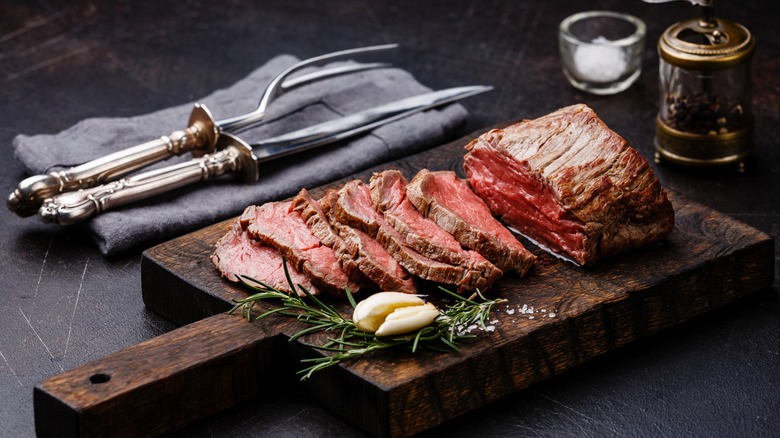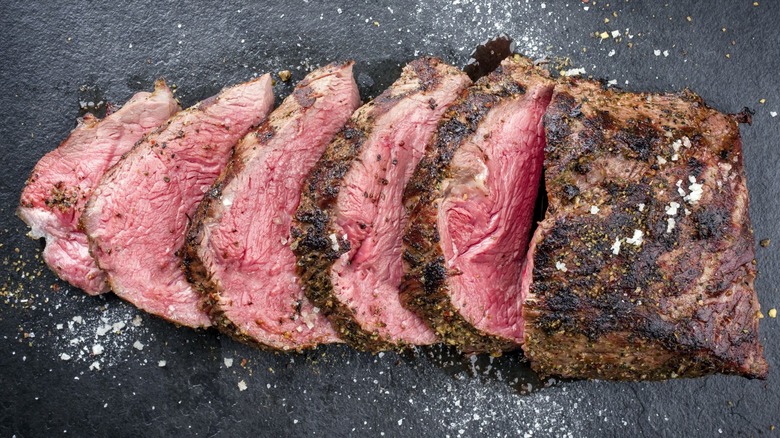The Difference Between Chateaubriand Steak And Filet Mignon
It pays to know your cuts of beef to avoid overspending on a premium label or selecting the wrong meat for your recipe. That counts double when dealing with expensive steaks sourced from the beef tenderloin, where the stakes are doubly high in terms of both cost and culinary expectations. The beef tenderloin is a prized steak cut known for its unparalleled tenderness.
This small cylindrical muscle runs along the cow's spine. It's low in fat and has very little tendon, resulting in a remarkably soft texture. Divided into various cuts, the most celebrated sections include the Chateaubriand, which is a large portion cut from the center of the tenderloin, and filet mignon, small individual steaks cut from the end section. Thicker center Chateaubriand is perfect for sharing, while filet mignon is meant to be an individual steak.
Both showcase the tender, buttery texture characteristic of the beef tenderloin. Tenderloin steaks, lacking tendons and fat, tend to become dry if overcooked. Therefore, both Chateaubriand and filet mignon steaks will have the best flavor and texture when cooked to medium doneness, avoiding the risk of dryness associated with prolonged cooking.
Luxurious Chateaubriand
Chateaubriand steak was named after the 19th-century French writer and statesman François-René de Chateaubriand by his personal chef. This premium cut is taken from the widest diameter center of the beef tenderloin and can be anywhere from 8 ounces to several pounds in size, serving from two to eight people.
Chateaubriand steak commands a higher price than all other tenderloin cuts because it comes from the one and only center of the tenderloin. The scarcity of the cut can also make it a challenge to find – it's sometimes labeled as a "center cut tenderloin." The preparation often involves simple grilling or roasting the steak in one piece, with minimal seasoning to allow the inherent beefy goodness to shine.
Being quite low in fat, the steak is typically accompanied by rich sauces like Béarnaise or savory compound butter, as in this Chateaubriand and savory butter recipe, to add more flavor. Its legacy as a symbol of fine dining has lasted over the centuries, making it a timeless choice for celebrations and intimate romantic dinners alike.
Deluxe filet migon
Steaks labeled as filet mignon are also sliced from the tenderloin, often from each side of the central Chateaubriand cut. However, there are occasions when the entire tenderloin is cut into individual steaks, all bearing the same name. "Mignon" is French for "small," highlighting the smaller diameter of the ends of the tenderloin where these steaks are usually taken.
To prepare a filet mignon, a quick sear or grill is common to prevent overcooking, ensuring that it remains tender enough to be easily cut with a fork. Filet mignon can be slightly less expensive than Chateaubriand because there are more cuts per tenderloin, and you can also buy individual portions, making this higher-priced steak somewhat more affordable by comparison.
Filet mignon's smaller size makes it perfect for solo servings, and its versatility allows for endless pairings. Classic sauces, savory mushrooms, or rich wine reductions all work well with filet mignon, adding complementary fat and flavor to this lean, luxury steak.


